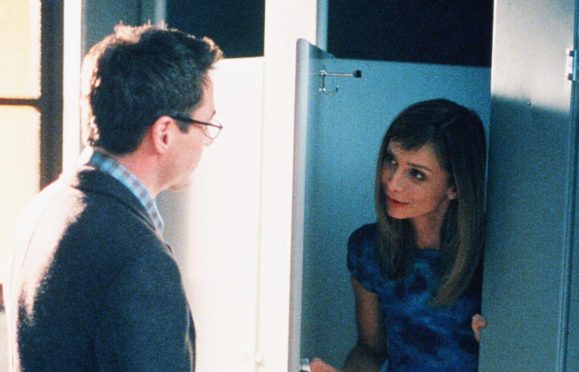
When American comedy-drama Ally McBeal first made its way across the pond and on to our TV screens, it wasn’t the infamous Dancing Baby hallucinations I found unusual, strange or even a little horrifying – it was the thought of an office sharing one unisex bathroom.
More than 20 years later, I still find it unimaginable to think the high-powered lawyers of Cage & Fish happily spent a penny willy-nilly, but it seems the series really was ahead of its time.
Today, it’s becoming more and more common to find gender neutral toilets in restaurants, cafes, bars and even workplaces, as we all attempt to make public spaces more inclusive for everyone.
But, personally, I’m not that keen on having to share a gender-neutral toilet, and I was pleased to hear the House of Lords debating this week whether or not at least half of communal facilities in public buildings should be reserved for women only.
Arguing in favour of the proposal, Conservative peer Lord Lucas called for gender-neutral bathrooms to be scrapped because they make women feel “uncomfortable” adding that he thought it was “entirely reasonable for women to want a separate space.”
I can’t help but agree with him.
I don’t have an issue if there is, say, just one loo available for everyone’s use, but I draw the line at sharing a row of cubicles.
However, the debate around toilets isn’t particularly new – stand next to a woman in the toilet queue during a theatre interval or match half-time, and you’ll inevitably strike up a conversation about how there’s always a slow-moving line snaking out of the ladies, while men simply stroll in and out of their restroom without delay.
Women have so many more reasons to visit the toilet than men do, and it often takes a lot longer to dash in and out of a cubicle than it does to stand at a urinal. But back in the day when lots of major event buildings and stadiums were constructed, the world was very male dominated, and there was simply more provision made for men. It goes without saying you can fit a whole lot more urinals side-by-side than you can cubicles, and yet women’s loos are often allocated the same amount of space.
While Lord Lucas’ comments sparked controversy with some, I thought it was great to hear a male MP tackling an issue and considering it from a women’s point of view. I understand the reasoning behind the introduction of gender-neutral toilets, especially when it comes to creating comfortable and safe spaces for the LGBTQ+ community.
Certainly, if you identify as a woman, no matter what body you were born into, you should use the ladies’ loo. And vice versa.
But it’s all about choice. And I choose not to keep putting the toilet seat down.

Enjoy the convenience of having The Sunday Post delivered as a digital ePaper straight to your smartphone, tablet or computer.
Subscribe for only £5.49 a month and enjoy all the benefits of the printed paper as a digital replica.
Subscribe